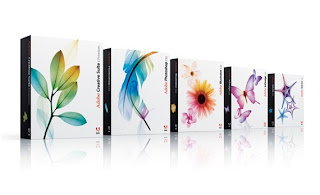

Neville Brody is an alumnus of the London College of Communication and studied at Hammersmith College of Art under Ruskin Spear (alumni include Glenn Tutsell, Michael Peters and Howard Milton) and is known for his work on The Face magazine (1981–1986) and Arena magazine (1987–1990), as well as for designing record covers for artists such as Cabaret Voltaire, Depeche Mode and Nine Inch Nails.
He was one of the founding members of FontWorks [1] in London and designed a number of notable typefaces for them. He was also partly responsible for instigating the FUSE project an influential fusion between a magazine, graphics design and typeface design. Each pack includes a publication with articles relating to typography and surrounding subjects, four brand new fonts that are unique and revolutionary in some shape or form and four posters designed by the type designer usually using little more than their included font.
Initially working in record cover design, Brody made his name largely through his revolutionary work as Art Director for The Face magazine. Other international magazine and newspaper directions have included City Limits, Lei, Per Lui, Actuel and Arena, together with the radical new look for two leading British newspapers the The Guardian and The Observer (both newspaper and magazine).[citation needed] Brody has consistently pushed the boundaries of visual communication in all media through his experimental and challenging work, and continues to extend the visual languages we use through his exploratory creative expression. In 1988 Thames & Hudson published the first of two volumes about his work, which became the world's best selling graphic design book.[citation needed] Combined sales now exceed 120,000.[citation needed] An accompanying exhibition of his work at the Victoria and Albert Museum attracted over 40,000 visitors[citation needed] before touring Europe and Japan.
Neville Brody continues to work as a graphic designer and together with business partner Fwa Richards launched his own design practice, Research Studios, in London in 1994. Since then studios have been opened in San Francisco, Paris, Berlin and New York. The company is best known for its ability to create new visual languages for a variety of applications ranging from publishing to film. It also creates innovative packaging and website design for clients such as Kenzo, corporate identity for clients such as Homechoice, and on-screen graphics for clients such as Paramount Studios, makers of the Mission Impossible films.
Recent projects include the redesign of the The Times in November 2006 with the creation of a new font Times Modern. The typeface shares many visual similarities with Mercury designed by Jonathan Hoefler. It has been widely reported that the newspaper had only changed typefaces four times. This is not the case, the newspaper had changed typefaces countless times during the age of handsetting. The original Daily Universal Register was set in a Caslon like typeface from the Fry Type foundry
The company also completed a visual identity project for the famous Paris contemporary art exhibition Nuit Blanche in 2006.
Brody’s team launched a new look for the champagne brand Dom Pérignon in February 2007, having been appointed in 2004 to help the brand with its strategy and repositioning. A sister company, Research Publishing, produces and publishes experimental multi-media works by young artists. The primary focus is on FUSE, the conference and quarterly forum for experimental typography and communications. The publication is approaching its 20th issue over a publishing period of over ten years. Three FUSE conferences have so far been held, in London, San Francisco and Berlin. The conferences bring together speakers from design, architecture, sound, film and interactive design and web.



















